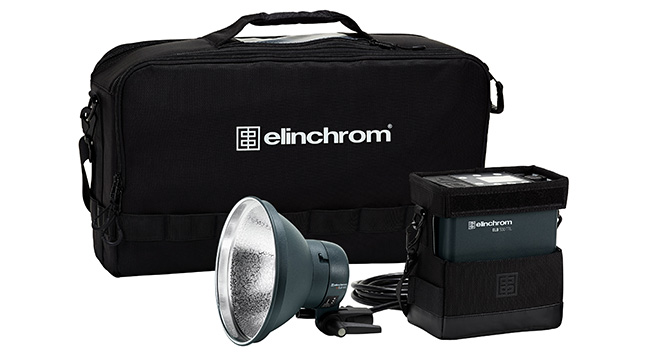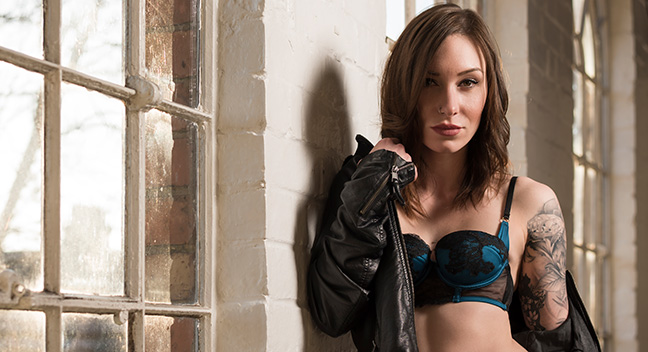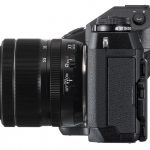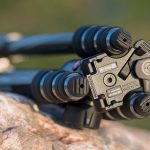
Elinchrom ELB 500 TTL test
Posted on Apr 17, 2018
Speedlights are compact and convenient and using them off camera is straightforward whether you want to work manually or in TTL. But if you want lots of studio-quality light on location, a battery-powered studio system such as the new Elinchrom ELB 500 TTL is the way to go. And for the first time in an Elinchrom system there’s the option of speedlight convenience in the form of TTL flash metering with the appropriate trigger.
The ELB 500 power pack needs ELB 500 heads; the cable fittings of existing Quadra heads are the same but they won’t work with the new pack.
With one head you can use either socket and, when you have two heads, you get full asymmetry for complete modelling control. Turn the unit on, push A or B to confirm which socket you are using and you’re almost ready to shoot once you’ve sorted synchronisation. There’s a full set of options including wired and wireless, and the latter can be in manual or TTL depending on the trigger you are using. The pack has an optical sensor too so you can trigger via another flashgun.
For the full set of features you need the Skyport Pro and Skyport Plus HS owners can upgrade their triggers to the Pro with 2.10 firmware. Canon and Nikon compatibility is currently available with other brands to follow.

The Pro trigger costs £209 and is not included in the To Go kits. If you own a Phottix Odin II, that is compatible, too, in manual and TTL.
Switch on the Skyport Pro trigger and it will automatically scan for an active unit. The detected unit is shown on the trigger’s display. I found the legibility and clarity of the Skyport interface could be better; its small thin type is not that clear and if the power level and amount of compensation were bigger or bolder that would enhance handling. The power unit’s LCD display has the same look and style of the Skyport so that could be better too for menu setting but at least the output level is nice and big.
Using the menu to configure the pack to the job in hand is straightforward and there’s a wide range of set-up options. Here you can set recycling mode (fast or eco), select group and frequency, and choose between normal or action mode – here, flash duration is as brief as 1/20,833 at the lowest output setting of 0.1.
On the pack, adjusting power can be done in 0.1EV steps throughout the 0.1 to 6.3 range. For full EV adjustments use the arrow controls. Power changing can be set wirelessly via the Pro trigger, as can choosing manual or TTL mode, compensation and groups.
I tried manual and TTL modes, and did various studio tests to assess power output, flash duration and white-balance at different power settings and in action and normal flash modes.
I tested power output using the ELB 500 with its standard reflector with the head placed 2m from a flash meter using an ISO of 100. At full power of 6.3, I got a reading of f/22.6 and at 6.0 a reading of f/22.3. Adjusting output in 1EV steps was mirrored accurately in my meter readings to within 0.1EV which is impressive accuracy and consistency. At 1.0, output was measured at f/4.0.4 and minimum output of 0.1 was metered at f/2.8.7.

So there is plenty of power on tap to allow useful apertures at typical shooting distances. Equally, if you want to shoot at wider lens apertures for shallower depth-of-field that is possible, too.
Next I tested white-balance shift in normal and action modes at minimum and maximum outputs using a Datacolor test chart. As a control I took a custom white-balance reading using a Nikon D810 and a sheet of white card with the ELB 500 in normal mode and full power. Colour consistency proved impressive especially in normal flash mode, where there was little discernible colour shift from a practical perspective as output was adjusted from maximum to minimum.
Output in speed mode is slightly cooler but it is only noticeable with direct comparison of test pictures. Viewed in isolation, results were perfectly acceptable and any shift is easily corrected on editing – or with a custom WB reading.
I used an electric fan to assess flash duration. Duration is displayed on the pack’s LCD panel. At full power in normal mode, duration is 1/250sec and this drops to 1/3401sec at minimum power. For briefer flash bursts you need to set action mode, and here at 5.0 duration is 1/1086sec – this compares with 1/700sec at 5.0 in normal mode. It is as you drop down in output that durations shorten, so at 1.0 bursts last 1/12,500sec and you get 1/20,000sec at 0.2 output.
My high speed sync test was done with the flash head two metres from the colour test chart, again using the D810 at ISO 100. I took shots at the ELB’s full power and shutter speeds up to the camera’s 1/8000sec top speed at various apertures and used the camera’s histogram to assess exposure. I also shot a sheet of white board to detect any across-the-frame gradation – there wasn’t any, even at 1/8000sec.
Shooting at 1/8000sec in HSS, f/4 gave a good exposure but even f/5.6 was good and easily recoverable in Raw. This is impressive bearing in mind I was testing at ISO 100. With the high quality possible at ISO 400 or ISO 800 that means you have the option of f/8 or f/11 at 1/8000sec. Drop down the shutter speed and you get even more power so, for example, 1/1000sec tests shots at f/11 looked good.
In the lab, the ELB 500 delivered, and the same applied in practice. It was lovely to use in manual or TTL operation with plenty of power in reserve, the LED modelling lamps were useful and the battery had plenty of capacity. Some photographers prefer the control of manual but the ELB 500 offers a hybrid way of working, using TTL to determine the right exposure then switching to manual with the TTL settings retained. On the other hand, if the convenience of TTL appeals the ELB 500 works well having full asymmetry with two heads makes fine tuning of the light simple.
Add the support of Elinchrom’s modifier system and there is no doubt that the ELB 500 is one of the best portable flash systems around – and well priced, too.
Verdict:
The Elinchrom ELB 500 is an excellent piece of kit that packs a considerable punch, with 500Ws at your disposal. In terms of what is possible with it, you have a kit that’s powerful, capable, versatile and portable. You get decent output levels for high speed sync shooting and for short duration work you can work at 1/20,833sec if the power level suits.
A two head outfit with a Skyport Transmitter Plus HS is the fat end of two grand so the ELB 500 TTL is a serious investment, but then it is a serious piece of kit and has the potential to open up all sorts of opportunities for your photography – for that reason it’s well worth the commitment.
Pros: Compact and lightweight, power output, great handling, full asymmetry, power at HSS, cable length
Cons: Small thing, but type on the menu and on the Skyport trigger LCD could be bigger/clearer
As featured in issue 54 of Photography News.




